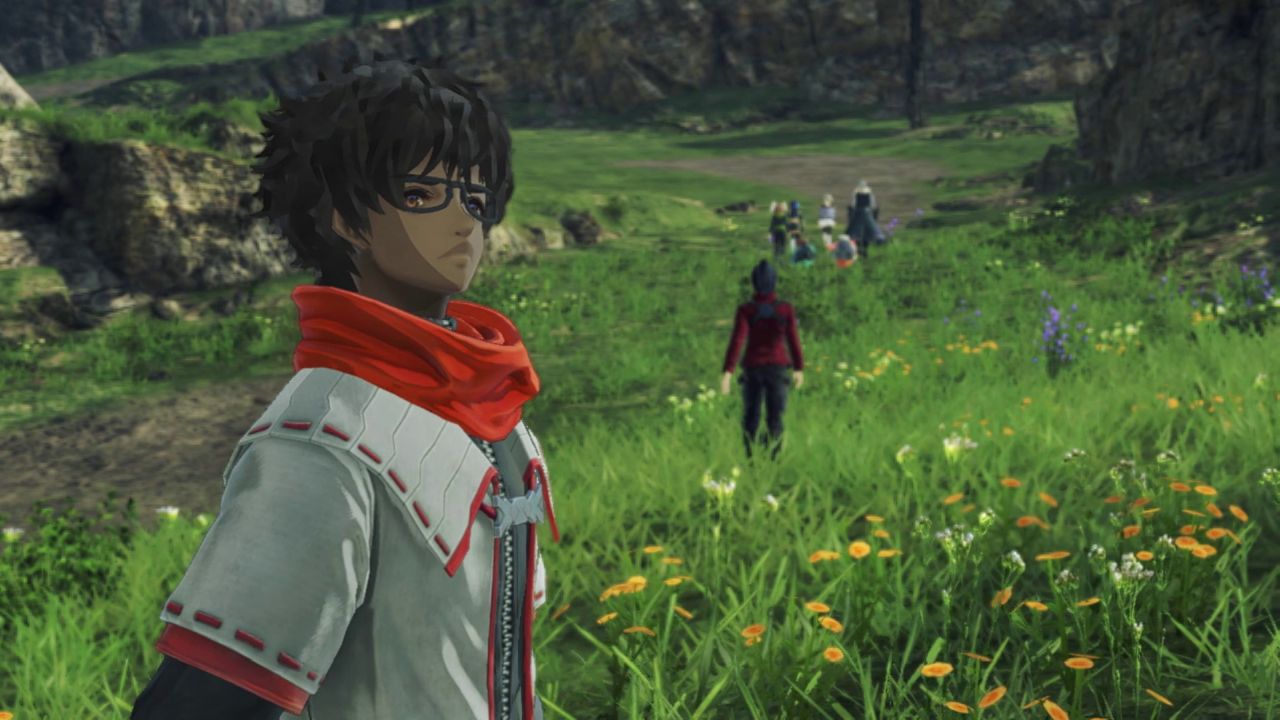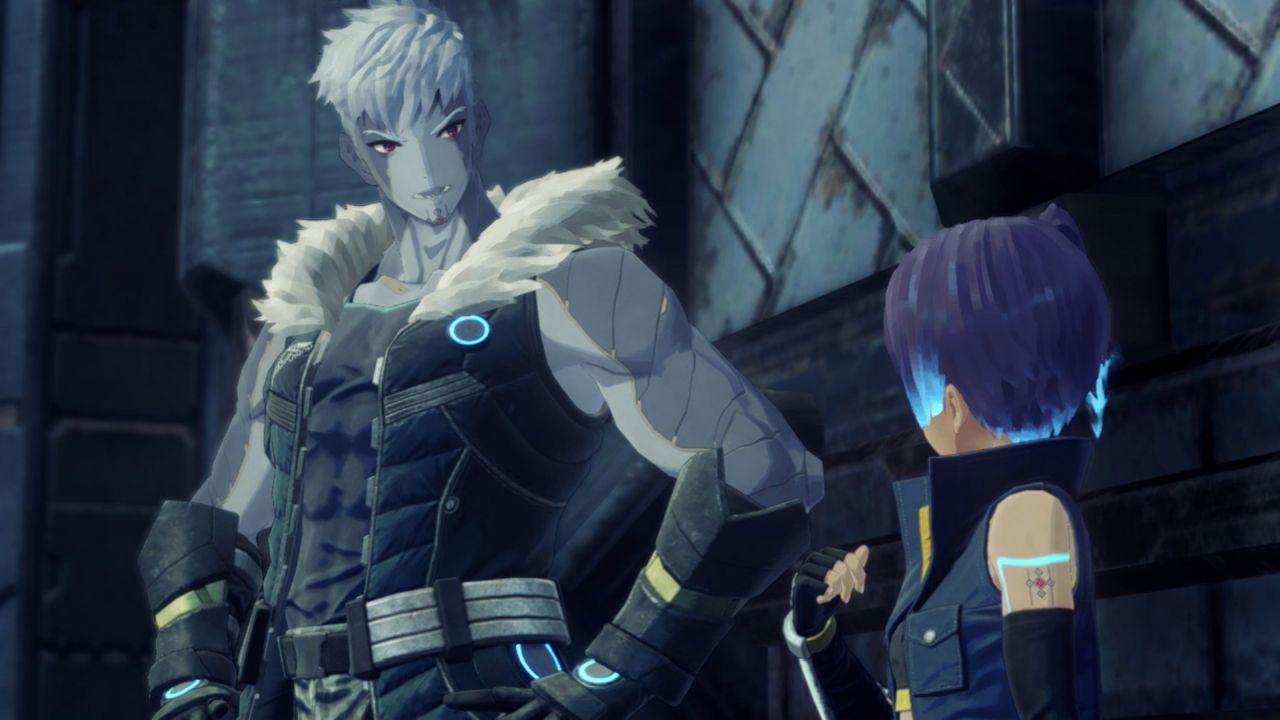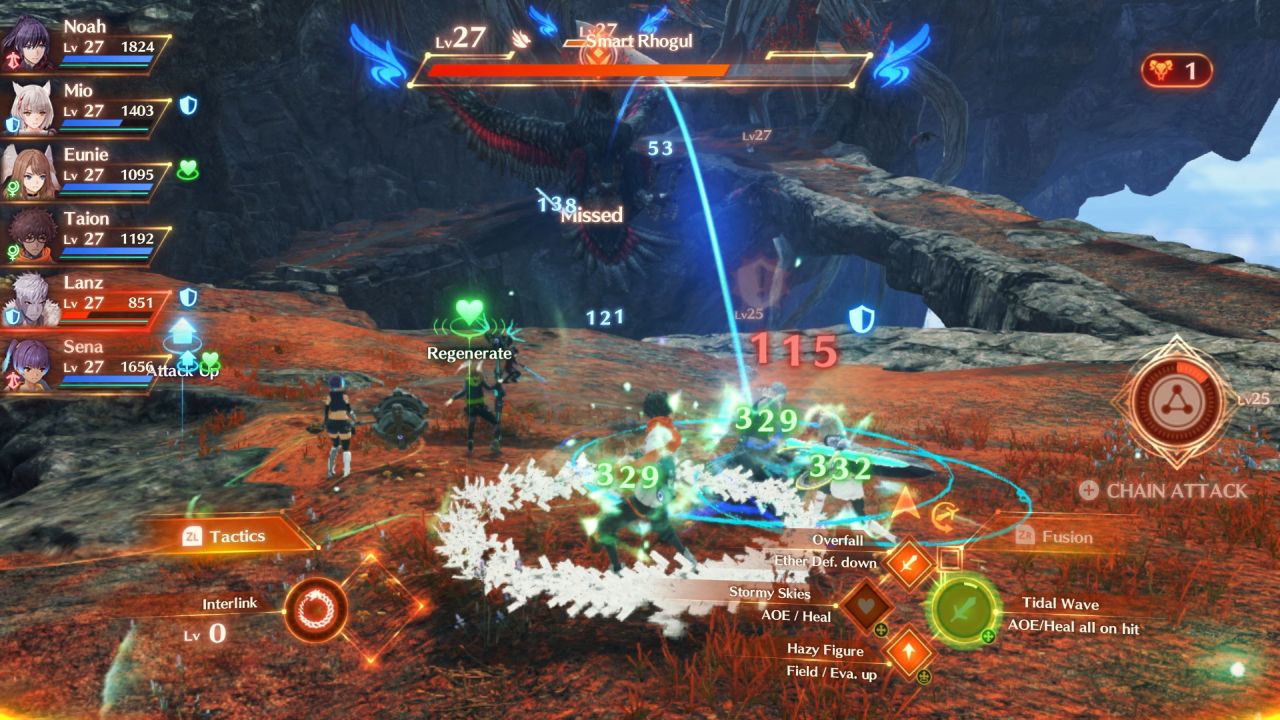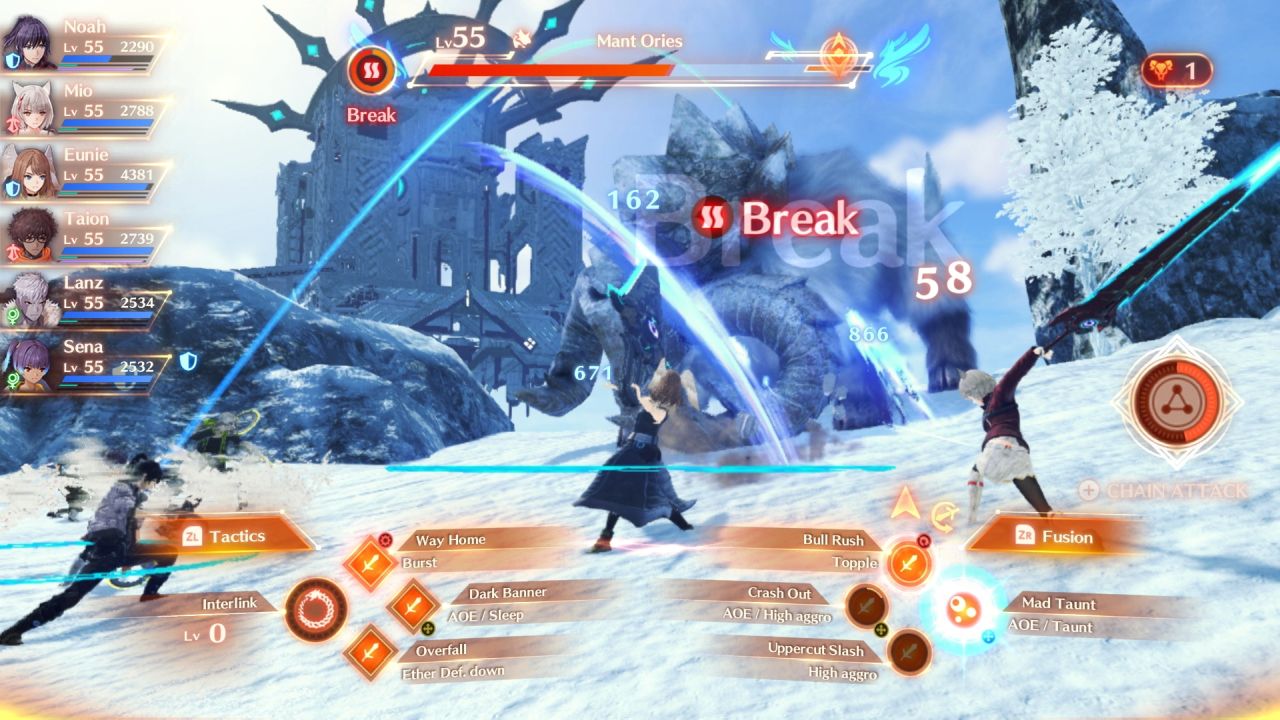Xenoblade Chronicles 3 Review
Originally released in 2012 for US audiences, Xenoblade Chronicles was one of the strongest RPGs to hit the Nintendo Wii. The title’s excellent battle system and open-world design made it a standout in the dying days of the console. It wasn’t too surprising considering the genre prowess of developer Monolith Soft. Although I had my issues with it, the RPG more than lived up to the strong pedigree of the studio. I wasn’t as impressed with the immediate sequel, though, which suffered from weak storytelling and unrestrained bloat. Enough time has passed for me to want to jump back into the world of the series with the arrival of Xenoblade Chronicles 3.

Taking place following the events of the prior two entries, Xenoblade Chronicles 3 drops you onto the planet of Aionios. Two nations on this planet have found themselves stuck in a never-ending battle for survival. The nation of Keves is known for their technical prowess and use of machinery, while the nation of Agnus is proficient in utilizing the magical energy known as ether. When the adventure first begins, we are introduced to a trio of Kevesi soldiers: Noah, Lanz and Eunie. During one special mission, the trio comes face to face with a group of Agnian soldiers: Mio, Sena and Taion. For spoiler-related reasons, I won’t reveal exactly how it happens, but soon the two opposing squads are forced to work together. With the forces of both nations now after the six, they must learn to work together to take down their true enemy.
A cloud of depression and melancholy hangs over the cast of characters at all times. All six of them have been brought up in a world that prioritizes war. Slaughtering your enemy has always been presented as the most important thing in life, and, due to the Flame Clocks of each region, key to keeping them alive. Once they are forced to work together, though, they learn that there is more to life than just endless battle. It’s a new line of thinking that affects each member of the cast in different ways. Noah, for example, is someone who clearly isn’t a fan of the endless war, and once an opportunity presents itself for a different kind of change, he is more than willing to take it. Others, such as Eunie, don’t take to the drastic change as well at first.
While the mystery of figuring out who is really pulling the strings in Aionios intrigues, what hooked me most about Xenoblade Chronicles 3 was the main cast. The six stars are a major step-up from the cast of the previous two entries in the series in my opinion. It’s also a little surprising, as when you first meet everyone, they all seem like bland anime archetypes. Taion is tactical, but cold, and Lanz is brash, but loyal. However, as you make your way through the main campaign, and tackle their side-quests, you unveil new layers to these characters. I wanted to spend as much time as I could with these characters and was excited when a new flashback would pop up delving into their past.

It’s a good thing the plot interested me as much as it did, because this RPG suffers from some rough pacing issues. The game consistently bombards you with cutscene after cutscene, often to the detriment of being able to play. Some of these are just brief snippets of dialogue, which often feel pointless. Others drag on far longer than you would like. It’s particularly annoying when you come across a portion of the game where you hit a small cutscene, get to walk for a few feet, then get hit with a much longer scene. And if you are invested in the story, like me, you don’t really want to skip these either. Otherwise, you run the risk of missing a piece of crucial information. I appreciate that Monolith Soft is working hard to flesh out their universe, but these scenes could have been implemented into the action better.
Once the main team comes together, the massive world of Xenoblade Chronicles 3 begins to open up. From scorching hot deserts to tree-top bases, Aionios is a large planet, and it is broken down into several smaller chunks based on both geography and who controls the territory. You are given largely free reign to explore; certain areas can only be reached once you complete specific quests and unlock new skills, such as climbing. However, it would still behoove you to look around as much as you can, particularly in the early goings. Both enemies and resources are openly seen on-screen, and it’s a good idea to grind levels and collect items when given the opportunity. As you level up, lower-level enemies aren’t as prone to attacking you as well, which makes returning to certain locations to complete side-quests that much easier. With unique enemy types and new items to find, I enjoyed covering every nook and cranny of these areas.
For the uninitiated, the combat engine of Xenoblade Chronicles 3 can feel overwhelming. In the first two or so chapters, you are made aware of what feels like hundreds of different mechanics and systems that make-up the combat. However, it’s not nearly as complicated as it appears, and even if you do miss something, there are helpful tip and training sections to help. The first thing you’ll realize is that it kind of runs on autopilot. Similar to MMO games, basic attacks happen automatically once you get into battle. As long as you are within striking distance of a target, you’ll at least be attempting to damage it. What you need to directly focus on are the assortment of special attacks you have.

These special attacks, or Arts as they are called in-game, are dependent on character classes. You have a handful of Arts to choose from within each class, and each one has their own specialized traits and side-effects. For example, I have the Swordfighter class equipped for Noah, so his Arts are currently focused on dealing damage. One of these Arts, Air Slash, is amplified if I use it while canceling my basic attack. Another one, Edge Thrust, does more damage if I strike the enemy from behind. The key to success in battle is making sure your squad has solid variation in classes being used, which opens to door to an assortment of Arts being able to be used at your disposal.
Experimenting with the class system is important as you make your way through the campaign. There are 23 total classes in the title, and each of them is classified into one of three categories: Attacker, Defender, and Healer. The six main party members have their own different classes, and additional ones unlock upon completing certain side-quests. Maxing out each of the classes can be taxing but doing so is rewarding. Once you have sufficiently leveled up the class you have equipped, you’ll unlock its Master Art, which can be equipped regardless of class. Master Arts play a role in the powerful Chain Attack system. This is the team’s ultimate attack, and if you don’t have the proper Arts equipped, you may not get as much out of it as you possibly could.
All these mechanics gel together to form an enjoyable and deep combat system. I loved mixing and matching different classes and unlocking different Arts to use for each character. Piecing together what works best with what is a puzzle that I took pleasure in solving. Even deep into the game, I was still working on getting everything unlocked and continuing to modify my set-ups. Ultimately, it adds a ton of variety to an engine that could have gotten stale due to the sheer length of the title. I do think the bloat of the campaign could have been cut back still, but due to the improvements made with the core gameplay, it doesn’t feel nearly as exhausting as the previous entry did.

However, the title’s biggest obstacle is something outside of its control. The aging hardware of the Nintendo Switch is working at max strength to make the title playable in a stable and consistent state. To do that, this means that cuts had to have been made in the looks department. Pop-in is a consistent issue, both regarding smaller details right in front of you and larger vistas off in the distance. This is an issue playing the title both docked and un-docked. The hardware issues also affect the character models. Textures on clothing are lacking in detail for both main and side characters, and there are clipping issues with both clothing and weapons. The developer did the best they could to help mask these flaws, though. I think the designs of the main cast are great. They sport a militarized look, but with more fantastical touches to help them stand out. And as big of an issue as pop-in is, I do think the environments are some of the best I have seen on this console. It’s amazing to see what the studio was able to do with the lesser tech afforded to them, but it’s hard not to want to see this in all its glory.
Once again, Yasunori Mitsuda and Manami Kiyota deliver an excellent soundtrack. Their work in the previous entries was magnificent, and that holds true here. Thanks to extensive use of the flute, the score has a more wistful and intimate sound than before. However, when you get to a major action setpiece, it kicks up to match the energy of the battle. The voice acting for the main cast deserves praise as well. As with the past entries, almost everyone speaks with European accents, which is an odd, but not entirely distracting choice. It’s definitely better than if they all had different American accents, that’s for sure. One thing that really bugged me, though, was the constant yammering they do after battles. It’s the same bits of dialogue repeated over and over again. They weren’t great lines to begin with either, so after hearing them several times in a row, I wanted to mute the game permanently.
I have thoroughly enjoyed my time with Xenoblade Chronicles 3. It makes its case for being the best entry in the series to date due to its improvements in both gameplay and cast design. I have continued to want to delve deeper into the various intricacies of the title despite being dozens of hours into it – with the main story clocking in at over 40 hours. That’s the mark of a solid RPG, if you ask me. However, with the series still marooned on the Nintendo Switch, there are issues that will continue to plague it. Try as they might, Monolith Soft can only cover up issues such as poor draw distance and muddled textures for so long. The studio should also work on spacing out their cutscenes or cutting back on them in entirely to ramp up the pace of the adventure. Even with all that said, though, this is in contention for best RPG currently available on the console.
